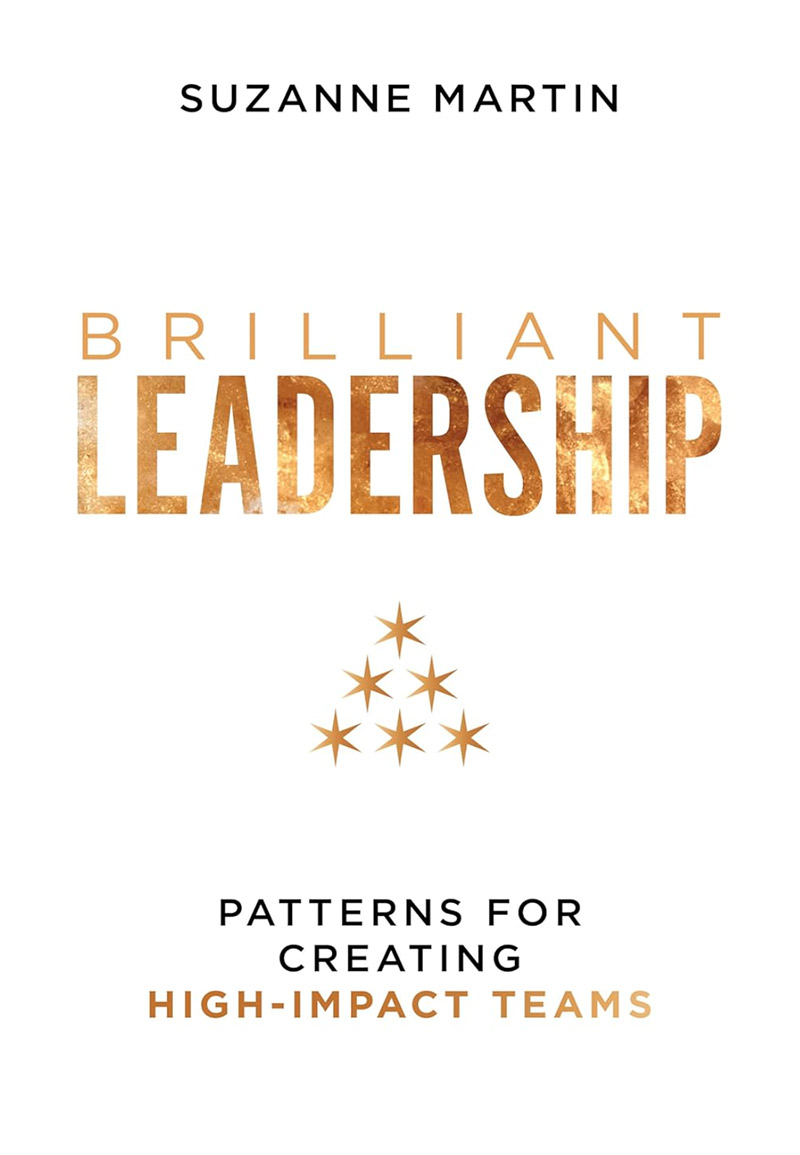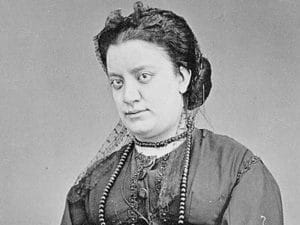Meet Suzanne Martin, the author behind the new groundbreaking book Brilliant Leadership: Patterns for Creating High-Impact Teams.
With over 25 years of experience in leadership and team development, including 16 years at Google where she most recently served as the Director of Global Marketer Training, Suzanne brings a wealth of knowledge and practical insights to the table. Her book offers a fresh perspective on leadership, encouraging readers to discover their unique leadership style through a series of self-discovery tools.
As an accredited coach with the International Coaching Federation and a member of the Forbes Inc. Coaches Council, Martin’s expertise extends far beyond theory. Her multifaceted background, which includes a coaching certificate from Columbia University and accreditations in various leadership assessment tools, has earned her praise from industry leaders.
From the critical ingredients for creating high-performing teams to why a one-size-fits-all leadership model is outdated and more – check out our full interview with Suzane Martin below.
Over your extensive career, particularly at Google, how have the various roles you’ve taken on shaped your understanding of leadership?,
Suzanne Martin: The transition from sales professional to leadersh,ip development specialist profoundly shifted my perspective. While my sales bin-person equipped me with the ability to identify customer needs and create persuasive solutions, it operated on a relativin-person-term, transactional basis.
In contrast, the world of academia, where I spent a portion of my career as a researcher and educator, unfolded at a slower pace, allowing for in-depth analysis and contemplation. With each new role, I gained a newfound appreciation for the interconnectedness of business, academia, and the broader world of work.
I realized that each domain has its own unique strengths and challenges and that the integration of knowledge and perspectives from different fields can lead to transformative outcomes.
What motivated you to join the International Coaching Federation, and how has being an accredited coach impacted your professional approach?
Suzanne Martin: As a manager and facilitator of leadership programs, I found that I really enjoyed the coaching aspects of my role. When I decided to pursue a formal coaching certification, I wanted to choose a program that was globally recognized and had rigorous standards and ethics. After researching several options, I chose the International Coach Federation (ICF) certification.
Although the ICF certification requires many hours of study and practice, I believe that it was worth it to be part of such a wonderful coaching community. Many thanks to my own professional development coaches especially Sue Stevenson and Nancy Holtze, MCC.
How does your coaching certificate from Columbia University complement your practical experience in leadership and team development?
Suzanne Martin: The Columbia Coaching program was an incredible experience and a big shout out to the head of the program, Dr Terrence E. Maltbia who is and was the leader of the program when I attended back in 2014.
It’s a one-week in-person intensive program followed by nine months of virtual classroom small group and individual work that ends with another one-week in-person coaching intensive. Lots of theories and frameworks are covered, but the most valuable part for me was videotaping your coaching sessions and getting real-time feedback.
Could you discuss the significance of your involvement with the Forbes Coaches Council since 2017?
Suzanne Martin: The Forbes Coaches Council is a community for selected coaches to share best practices and support each other. You can subscribe to different groups and message boards, and you can also publish articles on the Forbes website. It’s really been helpful for me to build a network, visibility, and credibility in the coaching space.
What are the key benefits of the Brain-Based Coaching accreditation for a leader in your field?
Suzanne Martin: Brain-based coaching, by David Rock, focuses on the neuroscience of coaching. It explores how the body reacts to perceived threats by activating the fight/flight/freeze response.
The key takeaway is that the brain is wired to protect us from danger, which can lead to misinterpretingthat of non-threatening situations as threats. This ,can hinder clear thinking and decision-making. Brain-based coaching helps individuals understand their brain’s workings and manage their reactions to perceive,d threats, ultimately enhancing coaching effectiveness and client outcomes.
In what who have personality assessment tools like Myers-Briggs Type Indicator and Hogan Assessments influenced your leadership coaching methods?
Suzanne Marti,n: Personality assessments offer valuable insight,s into our behaviors and tho,se of others, but they are tools, not solutions, for understanding ourselves and others.
I find the psychology behind personality profiles fascinating, but I don’t think any of them are a silver bullet for understanding self and others. I think each one is a mirror back that you can choose to learn from or not.
For example, knowing the Myers-Briggs scale of Extroverts and Introverts can help teams to communicate better. If someone with a preference for extraversion is leading a meeting and wants to have an impromptu brainstorm, they probably won’t get the best out of their more introverted colleagues.
One strategy would be to give advance notice of the brainstorming session so introverts can prepare and think about what they want to say instead of being put on the spot. Introverts have plenty to say; they usually just need a little time to process and encouragement to share without being talked over.
Just having the assessment is like having a horoscope, unless you actually use it to have better communication and interaction with others.
Living in New York with your family, how do you balance your personal life with your demanding professional responsibilities?
Suzanne Martin: [Laughs] Work life balance is so hard! I actually don’t think about it as a balancing act. I think of my work more like a marathon runner who is sometimes a sprinter with periods of intense work followed by rest and recovery.
I have periods where I need to be fully dedicated to a program or workshop that’s happening. Then I make sure to block important family and friends time to stay connected to people that matter to me.
My kids are in high school and middle school, and they’re becoming wonderfully independent. We really like each other’s company, and we have family things we like to do together, like soccer, skiing, tennis, and traveling. I learn so much from my kids every day!

What inspired you to write Brilliant Leadership: Patterns for Creating High-Impact Teams, and what do you hope readers take away from it?
Suzanne Martin: I was driven to write this book after noticing recurring effective leadership patterns while leading programs and coaching people. My team encouraged me to share my learnings with a wider audience, and my aim is to inspire individuals to begin their leadership journeys early and continually work on becoming better versions of themselves.
COVID-19 was a reflective time for me and allowed me to really start capturing my thoughts. I also got lots of encouragement from my amazing mom, who’s a retired English teacher. Even if no one else reads the book, I’m so happy I could share my work and the writing process with her.
Your book discusses nine behavioral patterns for leaders. Can you highlight one or two that are especially crucial for today’s leaders?
Suzanne Martin: The chapter on Patterns of Connection emphasizes the importance of prioritizing attention and connecting with others through empathy in an era of distractions and remote work. Effective communication strategies include active listening, empathy, shared purpose, authenticity, and clarity. Creating an open and inclusive culture, conducting regular check-ins, and organizing virtual and in-person team-building activities foster connection. Mentorship, coaching, and celebrating successes contribute to a cohesive team environment.
According to your research and insights, how can managers best use self-observation to enhance their leadership styles?
Suzanne Martin: Self-awareness is essential for leadership as it allows people to understand their strengths, weaknesses, biases, and blind spots. With self-awareness, they can help manage their emotions, communicate effectively, build strong relationships, and create a positive work environment.
Self-awareness enables leaders to make sound decisions, inspire teams, and adapt to change while developing as effective leaders. Instead of just using their knee-jerk response to something, they can observe and analyze their response and choose from a larger set of tools to respond in a way that helps them get the results they actually want.
In what ways does the environment influence the effectiveness of a high-performing team based on your experience and observations?
Suzanne Martin: Your environment can have a huge impact on your work and overall well-being.
Psychological safety is crucial for a positive work environment. Leaders can create it by being open and honest, encouraging open communication, respecting others, being fair and consistent, providing support, and celebrating success. This enhances employee engagement, productivity, and creativity.

Lastly, is there a specific mantra, quote, or affirmation you hold close to your heart?
Suzanne Martin: “Those who want to lead the orchestra must be willing to turn their back on the crowd.”
Be sure to follow Suzane online at:
- Website: https://www.brilliant-leadership.com/
- Check out Brilliant Leadership on Amazon
- Check out Brilliant Leadership on B&N
Emily Sprinkle, also known as Emma Loggins, is a designer, marketer, blogger, and speaker. She is the Editor-In-Chief for Women's Business Daily where she pulls from her experience as the CEO and Director of Strategy for Excite Creative Studios, where she specializes in web development, UI/UX design, social media marketing, and overall strategy for her clients.
Emily has also written for CNN, Autotrader, The Guardian, and is also the Editor-In-Chief for the geek lifestyle site FanBolt.com






